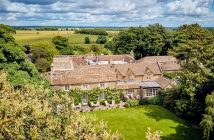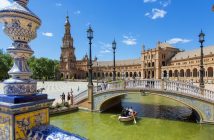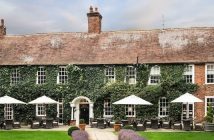It’s January, it must be time to plan the skiing holiday. In the first of a clutch of recommendations this season, the Arb’s alpine enthusiasts (though with varying degrees of skill) were sent forth to seek out some mountain treasures. First out of the blocks, Larry goes to a hidden corner of the Dolomites and the recently crowned Best Ski Chalet in Italy…
I am woken in the most delightful manner. Cocooned in a quilt and embraced by cushions, that perfect ambient temperature met in those first moments of waking is matched only by one further sensory experience, and the source of my rousing: the smell of baking. Croissants, if my olfactory faculties don’t deceive me.
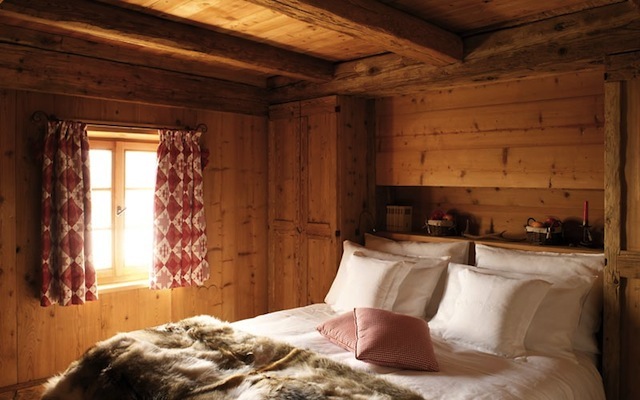
I am in the ‘nest’, one of the bedrooms of the San Lorenzo Mountain Lodge in the Italian Dolomites. A blade of sunlight cuts through the chink in the curtains indicating a glorious day outside and between that and the warm, buttery aroma from the kitchen below me, it’s enough incentive to pull me from my cosy nirvana and follow my nose to breakfast. Before I leave the room, I pull the curtains apart and am met by my first glimpse of the Tyrolean valley below me, it is a view I could never tire of seeing. The sun cresting the mountains to the east, gradually illuminating the peaks of their cousins opposite, and far below on the valley floor, wisps of mist dissipate slowly to reveal dotted chalets, fields and farmhouses in this quiet, unspoilt rural hideaway.
I had arrived the night before, met at Verona airport by Stefano Barbini, the owner of the lodge. I’m pleasantly surprised by this privileged welcome until I learn of the two hour transfer, at which English guilt sets in at having put him out. Nonsense, he tells me, it’s part of our personal approach to hospitality. At one hour, Innsbruck may be closer and with dramatic mountain views, although perhaps the best has to be from Venice; by helicopter directly to the lodge. It floors even the most expectant and wealthy clients.
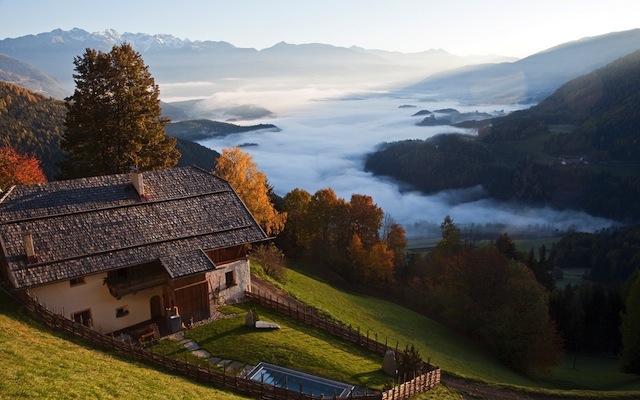
The drive from Verona is certainly not a chore, however, and gives a great introduction to the South Tyrol. From flat farmlands into the Dolomites, through towns such as Trento – oddly Austrian-looking but with an Italian temperament – coursing along the motorway through the valley the views of villages climbing the mountainside is delightfully distracting. Stefano is patiently engaging, humouring what must be repetitive questions with grace and enthusiasm, not to mention a thorough knowledge of the region, pointing out places of interest en route. Between the conversation and the effortless 140kph we were making, the transfer passes in no time.
The Verona route has another asset, however: wine. As we zip through the Tyrolean countryside I’m given the option of an introduction to the region’s terroir. Stefano’s enviable cellar is legendary, and features principally regional wines – it is, his peers concede, the most extensive collection of South Tyrolean wine in the world and has been built up from his diligent research, meeting the vintners directly rather than going though distributors. Again, that personal touch. We stop at Manincor, between Bolzano and Merano, a family-run vineyard harking back some 400 years, whose estate manager has a novel approach to the craft. Production may have been modernised to grow the business but the humanist approach has not been abandoned. If his vines are lethargic, he peps them up with nettle tea and, on one occasion, sensing their distress following a thunderstorm he calmed them with chamomile.
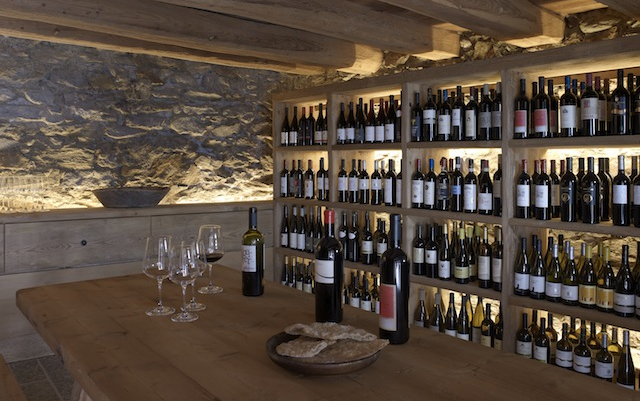
Making up a mere 1% of Italy’s wine growing area South Tyrolean wine amounts to something rather unique and with little exported, making it alarmingly expensive abroad, it becomes a real treat to try in situ. Before dinner each evening, we would go below to Stefano’s pride and joy, his cellar. Here, in the former goat shed, we would select our choices for the meal over a sparkling aperitif and a spin on his ‘Ferrari’. Not the automotive kind, I should add, for here was a perfectly restored Berkel ham-slicer; the monicker being a tribute to its rarity and craftsmanship. It was the beginning of a series of simple pleasures ahead; sipping locally-sourced bubbles and slicing spek made by a neighbour, I was beginning to grasp how this rural idyll had become the perfect retreat.
The lodge was the Barbinis’ holiday home before they opened it as a guest house in 2010. They used to drive the 700km there from Rome; that Verona run a mere hop by comparison. It was taking friends and clients there in this time, and the responses they received, that gave them the idea to let it before a corporate buy-out – Stefano was CEO of Escada, his wife Giorgia is the grand-daughter of the founder of Brioni – provided the impetus to hang up the frenetic world of fashion for the lure of a gentler pace of life altogether. It’s this personal touch that still makes up their mantra. And what has been created is the sum total of their experience; the unspoilt rural setting, designed and furnished from a career in the fashion industry, abundant unadulterated locally-sourced fruits of the land, and Giorgia’s passion for home-cooked food.
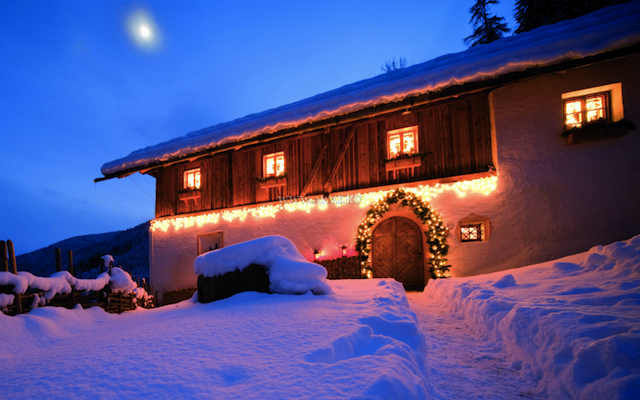
For all the anecdotal evidence during the drive, I had expected something grand, even ostentatious, when we finally arrived at the lodge that evening. But as we concluded the journey with a winding climb through pine and larch forests what met me was delightfully understated; a former 16th century hunting lodge, stone-built with a wooden pitched roof and little in the way of vulgarity. Inside, the vaulted ceiling and flagstone floor seemed to have changed little, bar some renovation, and certain details had been retained; hooks to hang ham in ceiling, and a hatch in the wall opening to a huge earthen oven in the ‘stube’ next door, around which a wooden crib and benches had been created, providing warmth through the building.
There are many, many quirks – largely because the building is listed – mis-shapen beams and lintels, uneven floors and coarse-plastered walls, all spruced in simple, rustic decor of neutral tones and muted colours. There is nothing ostentatious, nothing pretentious nor showy. It is, in a word, homely. This rustic decor is not to suggest the facilities are backward; on the contrary, the comforts extend beyond sumptuous soft furnishings. Throughout there is a thoroughly tasteful blend of contemporary fixtures and utilities bedded within the integrity of the building – never more so than in the ‘relaxation room’, with bucket shower, sauna, steam room and hot tub.
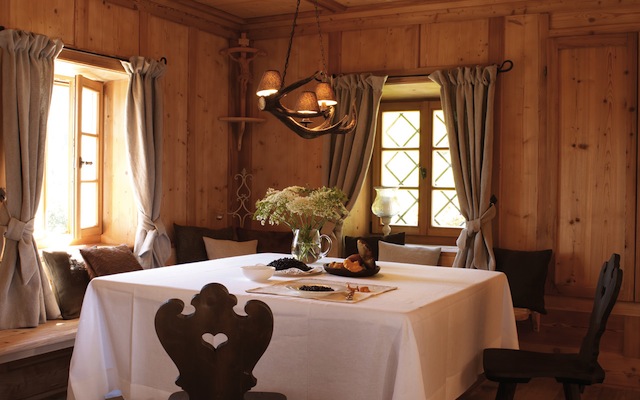
If you needed reminding you were in wooded mountains, you’d be hard pressed. Wood runs throughout in the three stube (living rooms); floor to ceiling, all antique, restored and untreated, simply sanded. Authenticity is the watchword at the lodge, and not simply for its rustic charm. The attention the Barbinis have given to the preservation of Tyrolean tradition even gave Stefano his key to the community. Suspicious and distrusting as the locals were when word went round that a couple from Rome had bought the run-down building, what won them over was a hand-made fence. Rather than opt for modernity, Stefano commissioned an octogenarian neighbour to create a traditional Tyrolean fence for the property surrounds. Refusing monetary payment, they traded in kind, Stefano rewarding the craftsman with the fruits of his cellar. The result caused a stir, with the villagers gathering to admire the fence upon its completion and even the mayor turning out for the occasion. The Barbinis were in. More so, in fact. From that moment on, not only did the villagers support the Barbinis, they would claim to be one of them. All of their neighbours now supply goods and services, ensuring everything is kept local.
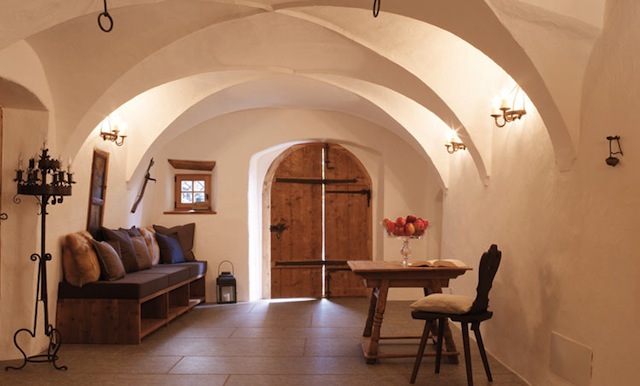
Dinner is an immersive experience; guests are invited into the kitchen to see what Georgia is cooking up. In our case, spinach and ricotta mezzelune, beef fillet with artichoke and almond crust and roasted radicchio and, to finish, an apple strudel better than anything over the border. I wasn’t the only one to think so; Pink Floyd’s drummer commented on it in the guest book.
Georgia’s philosophy in the kitchen harks back to an ancestral tradition; learning traditional home-cooking from her grandmother and catering specifically for her guests’ wishes. This is not ‘dinner by Danone’ you’d find at most ski resorts. In a two-week stay, for example, the menu is not repeated once, even to the extent that she has changed a dinner menu for a guest when she learned they’d eaten a similar dish at a restaurant for lunch. This ethos comes from her grandfather, the founder of the Brioni fashion label. When entertaining clients, they weren’t taken to a fancy restaurant, they were invited home. A restaurant suggests a business invitation, to go to one’s home is a personal invitation. It’s not, simply, the personable approach to their hospitality, however. The position, even isolation, of the mountain lodge, creates a privacy that attracts their guests; film directors and TV presenters take their families, safe from the glare of the paparazzi’s lens.
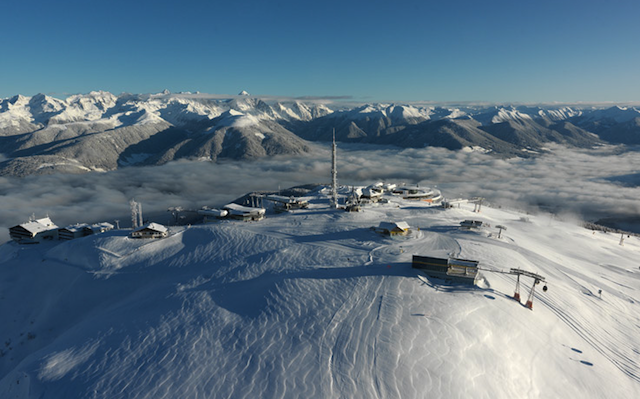
But what of the skiing? you ask. That is provided by Kronplatz (or Plan de Corones), the resort fifteen minutes from the lodge. Skiing in the Dolomites is unlike skiing elsewhere in the alps; there’s a very different sense to them. Kronplatz is marked by its ‘panetone’ shape, dome-like, giving a 360 degree option for skiing; once ascending to the summit it’s a curious but alluring facility, the idea that you could ski off in any direction. And its shape creates a topsy-turvy element; the hardest pistes aren’t at the top, but the bottom. Blue runs crown the mountain, with its gentler camber, before a steeper descent through the treeline. It gives the resort a distinct composition. Of the black runs that bring you back home, there is the famous ‘Sylvester’, a piste that draws skiers from all over Italy, if not Europe. And it was on this that I had my black run baptism, with Stefano’s guidance. Did I mention that he is also a qualified instructor?
The resort’s assets are not to be outdone. This may be skiing’s best kept secret. 116km of slopes provide ample pleasure and variety, even for someone of my limited ability, and with the latest in technical support and transport; their snow-making facilities are unrivalled, their cable car companies are investing to become the best in the Alps, there is a new rail connection direct to the resort. It’s no surprise that Reinhold Messner, arguably the greatest living mountaineer, chose Kronplatz for his latest exhibition venture, opening at the top of the mountain in 2014.
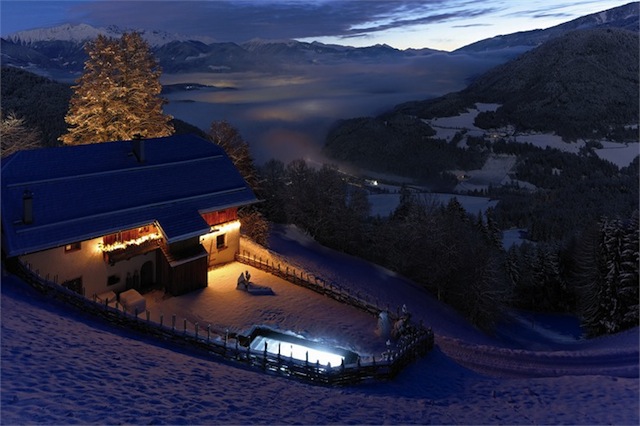
San Lorenzo may not meet the ‘ski in, ski out’ criteria many hotels are hanging their offering on but, by being the opposite, it seems to offer far more. Sat in the stube, sipping grappa and warm conversation, Stefano told me of one guest, an Italian TV producer, who, on arrival, hired every conceivable apparatus for the slopes; skis, snowboards, sledges, snow shoes, cramming the car. Once at the lodge, however, by his own admission, he cited the Italians’ propensity for having ‘all the gear but no idea’ and declared he was to spend a week in his pyjamas instead, such was its facility to relaxation.
You see, there are ski chalets and then there is the San Lorenzo mountain lodge. The people in the know seem to think so, too. After all, it won the Best Ski Chalet in Italy in 2013.
[box]San Lorenzo Mountain Lodge sleeps up to 6 adults and 4 children. It is available for exclusive rental from 2,400 euros per day based on 2 guests with the price increasing by 100 euro per additional adult or 50 euro per additional child. Rates include daily breakfast, afternoon tea and dinner plus non-alcoholic drinks and once daily private transfers to the slopes. The lodge offers further services at Kronplatz, whereby guests can enjoy an ‘express’ service for ski equipment with the hire facilities. For more details about the lodge, its activities and services, visit the website or contact +390474404042. For more details about Kronplatz and its facilities, visit the website. Finally, for more information about the South Tyrol, visit the the Sudtirol Tourism website.[/box]
